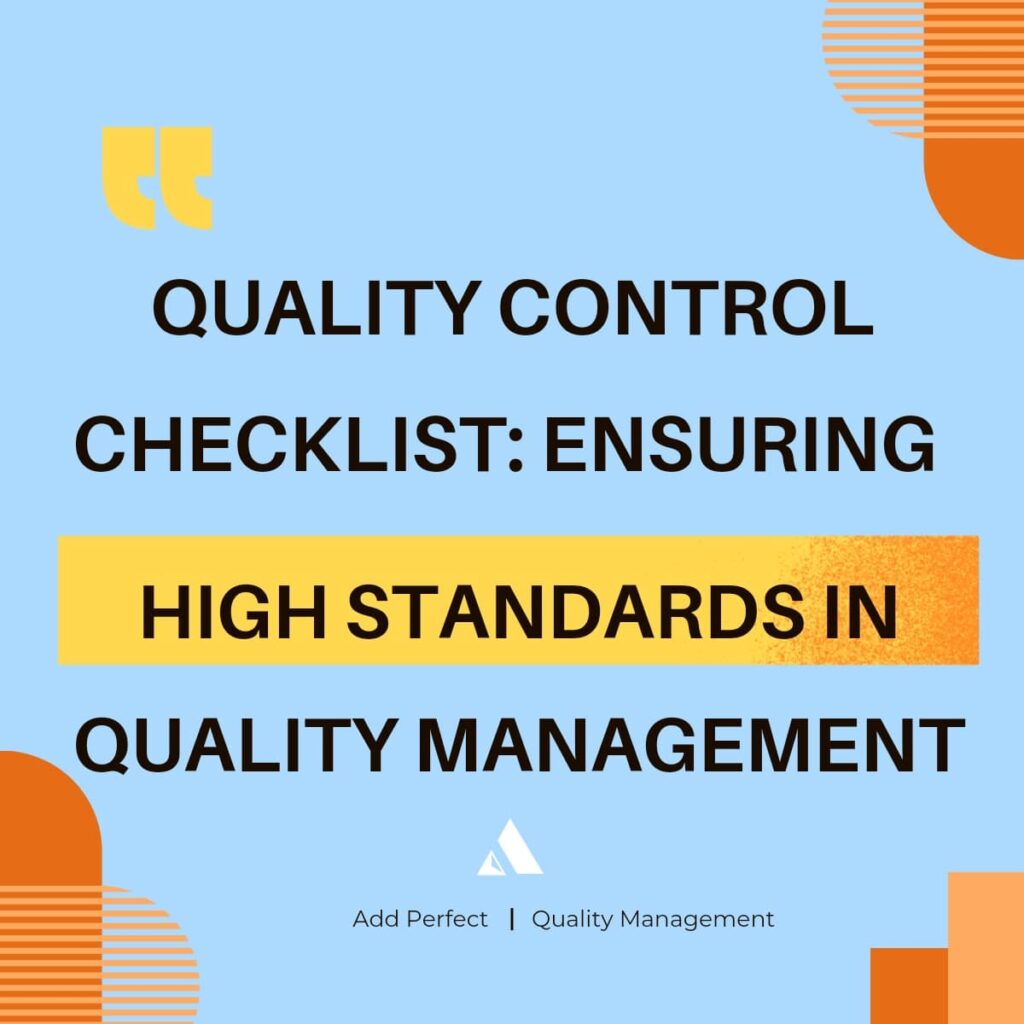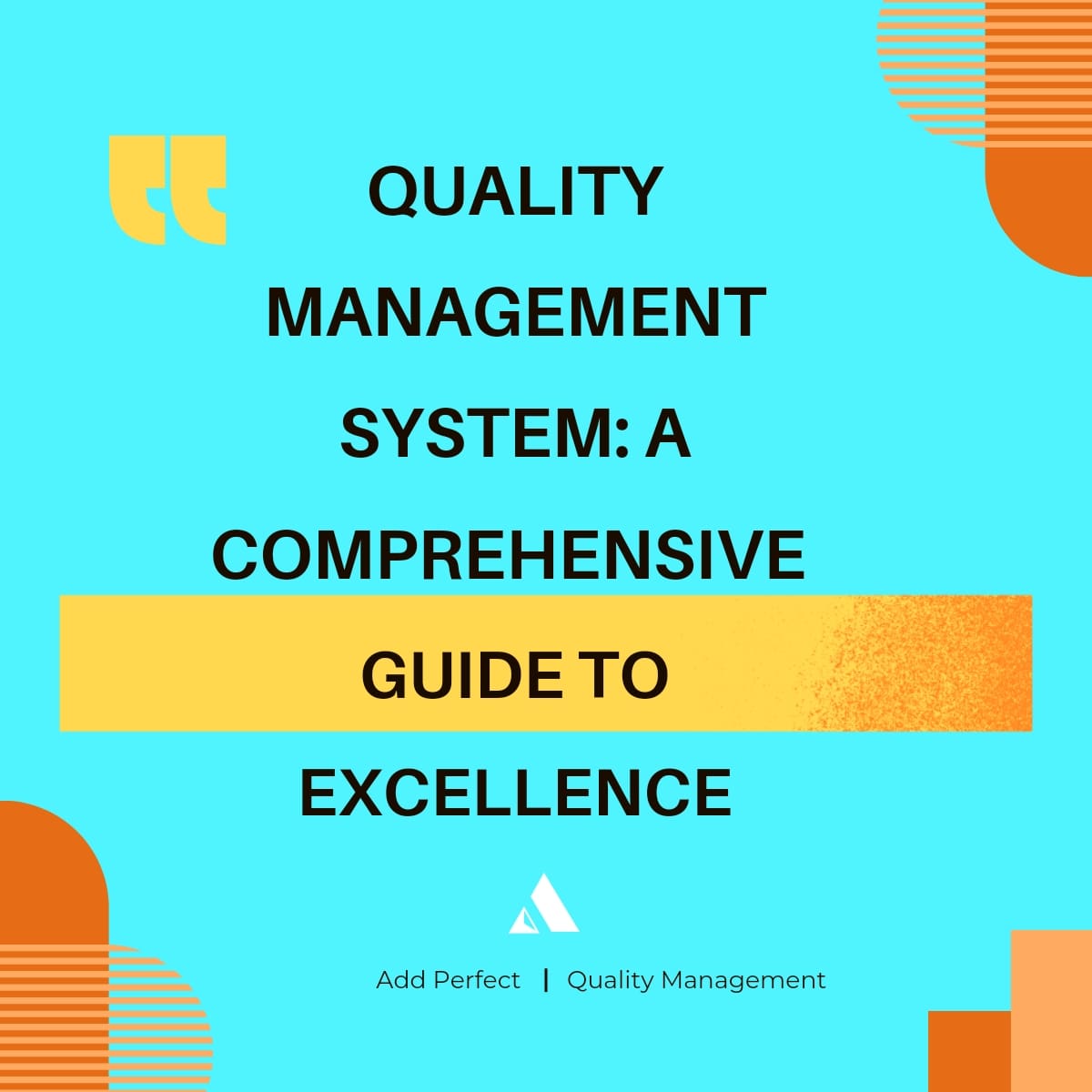Discover the importance of a Quality Control Checklist, its components, and how it ensures high-quality products and services.
Introduction
In the realm of quality management, maintaining high standards is crucial for business success. A Quality Control Checklist is an essential tool to ensure products and services meet predefined quality criteria. This article delves into the Quality Control Checklist, its components, and how it benefits various industries.

Understanding the Quality Control Checklist
A Quality Control Checklist is a structured document used to verify that products or services meet specific quality standards. It outlines the criteria, procedures, and requirements necessary to ensure consistency and quality in the final output.

Key Components of a Quality Control Checklist
The Quality Control Checklist typically includes several key components:
- Criteria: Specific quality standards that the product or service must meet.
- Inspection Points: Critical stages in the production process that require inspection.
- Methods: Techniques and tools used for inspection and testing.
- Frequency: How often inspections should be conducted.
- Documentation: Records of inspection results and actions taken.
Steps in Creating a Quality Control Checklist
Creating an effective Quality Control Checklist involves several crucial steps:
- Define Quality Standards: Establish clear and measurable quality standards.
- Identify Critical Points: Determine the key stages in the production process that impact quality.
- Select Inspection Methods: Choose appropriate methods for inspecting and testing products.
- Determine Inspection Frequency: Decide how often inspections should be carried out.
- Develop Documentation Procedures: Create a system for recording inspection results and corrective actions.
- Review and Update: Regularly review and update the checklist to reflect changes in quality standards or production processes.
Differences Between Quality Assurance and Quality Control
To understand the role of the Quality Control Checklist, it’s essential to differentiate it from Quality Assurance. Here’s a comparative table:
| Aspect | Quality Assurance | Quality Control |
|---|---|---|
| Focus | Processes | Products |
| Nature | Preventive | Corrective |
| Objective | Improve and ensure quality processes | Detect and correct product defects |
| Approach | Proactive | Reactive |
| Responsibility | Entire team | Dedicated personnel |
| Tools and Techniques | Process audits, training, documentation | Inspections, testing, validation methods |
| Timing | Throughout the production cycle | After production completion |
| Document | Quality Assurance Plan | Quality Control Checklist |
Implementing the Quality Control Checklist in Different Industries
The Quality Control Checklist is vital across various industries. Here’s how it applies to a few key sectors:
Manufacturing
In manufacturing, the Quality Control Checklist ensures that products meet quality standards at every stage of production.
- Criteria: Dimensions, weight, material specifications.
- Inspection Points: Raw materials, assembly line, final product.
- Methods: Visual inspections, measurements, functional tests.
- Frequency: Daily, per batch, or per unit.
- Documentation: Inspection reports, non-conformance records.
Software Development
In software development, the Quality Control Checklist helps ensure software meets user requirements and is free from defects.
- Criteria: Functionality, performance, security.
- Inspection Points: Code reviews, testing phases, final release.
- Methods: Automated tests, manual reviews, user acceptance testing.
- Frequency: Iterative, per release, continuous integration.
- Documentation: Test plans, defect logs, release notes.
Healthcare
In healthcare, the Quality Control Checklist ensures that patient care and medical services adhere to regulatory standards.
- Criteria: Patient safety, treatment efficacy, equipment calibration.
- Inspection Points: Patient admission, treatment procedures, discharge.
- Methods: Clinical audits, patient feedback, equipment testing.
- Frequency: Daily, per procedure, periodic audits.
- Documentation: Patient records, audit reports, maintenance logs.
Benefits of the Quality Control Checklist
Implementing a Quality Control Checklist offers numerous benefits:
- Consistency: Ensures products consistently meet quality standards.
- Accountability: Assigns responsibility for quality checks.
- Efficiency: Streamlines the inspection process, reducing waste and rework.
- Compliance: Helps adhere to regulatory and industry standards.
- Customer Satisfaction: High-quality products lead to increased customer trust and loyalty.
- Cost Reduction: Prevents defects, reducing costs associated with rework and returns.
Challenges in Implementing the Quality Control Checklist
While the Quality Control Checklist offers many benefits, it also presents challenges:
- Resource Intensive: Requires time and resources to develop and maintain.
- Resistance to Change: Employees may resist new procedures and checks.
- Complexity: Managing and updating checklists for different processes can be complex.
- Continuous Monitoring: Requires ongoing inspections and updates to remain effective.
Overcoming Challenges in the Quality Control Checklist
To successfully implement a Quality Control Checklist, organizations can adopt several strategies:
- Top-Down Commitment: Ensure leadership prioritizes quality checks.
- Employee Training: Train employees on the importance and use of the checklist.
- Clear Communication: Communicate the benefits of the checklist clearly.
- Regular Updates: Keep the checklist updated to reflect current standards and practices.
- Use of Technology: Utilize quality management software to streamline checklist management.
Case Study: Successful Implementation of a Quality Control Checklist
Company A: Manufacturing Industry
Company A, a leading manufacturer of consumer electronics, implemented a Quality Control Checklist to address quality issues. By defining clear criteria, identifying critical inspection points, and selecting appropriate inspection methods, they reduced defects by 25% and improved customer satisfaction.
Company B: Software Development
Company B, a software development firm, faced challenges with software bugs and customer complaints. Implementing a Quality Control Checklist involved defining quality criteria, setting inspection points throughout the development cycle, and documenting inspection results. This led to a 30% reduction in post-release bugs and improved customer feedback.
Frequently Asked Questions about the Quality Control Checklist
1. What is the main goal of a Quality Control Checklist?
- The main goal is to ensure that products or services meet predefined quality standards consistently.
2. How does a Quality Control Checklist differ from Quality Assurance?
- The Quality Control Checklist is focused on identifying and correcting defects in products, while Quality Assurance is focused on improving processes to prevent defects.
3. Can a Quality Control Checklist be applied to small businesses?
- Yes, the Quality Control Checklist can be scaled to fit the needs and resources of small businesses, helping them ensure product quality and customer satisfaction.
4. What tools are commonly used in conjunction with a Quality Control Checklist?
- Common tools include visual inspection tools, measurement devices, quality management software, and statistical process control (SPC) tools.
5. How often should a Quality Control Checklist be reviewed and updated?
- The Quality Control Checklist should be reviewed regularly, at least annually, or whenever significant changes occur in quality standards or production processes.
Conclusion
A Quality Control Checklist is an essential tool in quality management, ensuring that products and services consistently meet high standards. By defining clear criteria, identifying critical inspection points, and documenting inspection results, organizations can enhance product quality, increase efficiency, and improve customer satisfaction. Understanding and overcoming the challenges associated with implementing a quality control checklist is crucial for achieving these benefits. By incorporating this comprehensive approach, businesses can establish a robust quality control system that supports continuous improvement and excellence.




Normally I do not read article on blogs however I would like to say that this writeup very forced me to try and do so Your writing style has been amazed me Thanks quite great post
Its like you read my mind You appear to know so much about this like you wrote the book in it or something I think that you can do with a few pics to drive the message home a little bit but other than that this is fantastic blog A great read Ill certainly be back